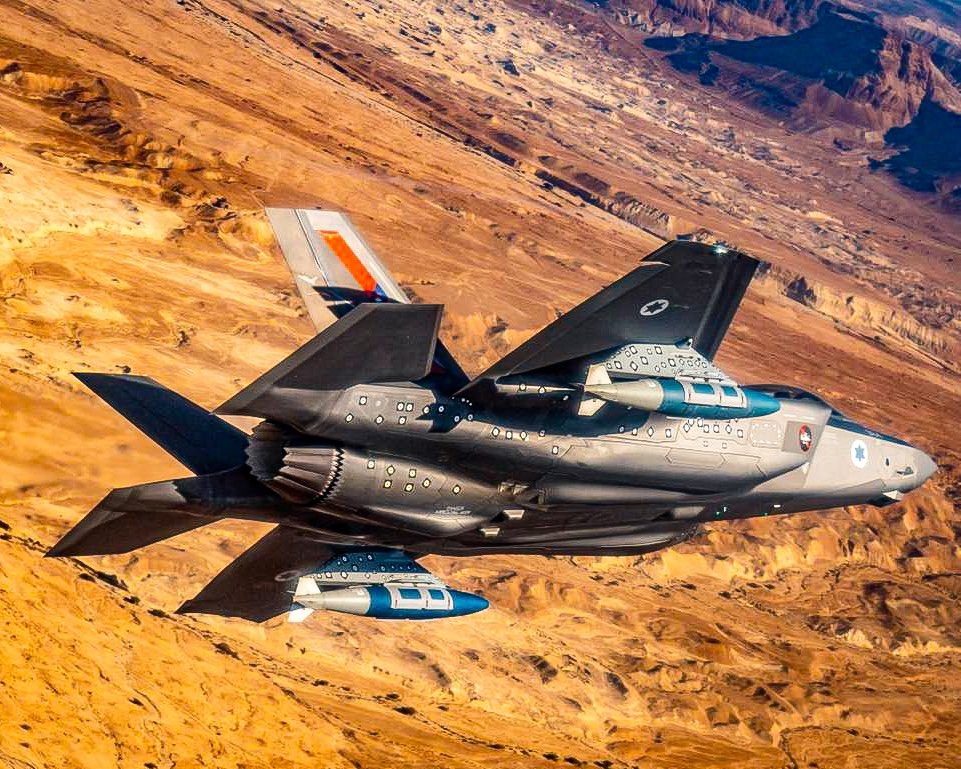The 12-day Iran-Israel War had many highlights. For instance, the first night of the attack, Israeli secret agents operated deep inside Iranian territory to sabotage its air defense systems and its deadly strikes to take out Iran’s top nuclear scientists and army leadership.
Similarly, Iran impressed with its ballistic missile capabilities, which repeatedly bypassed Israel’s layered air defense systems, despite the presence of some of the world’s most advanced missile interception platforms.
However, if there was one undisputed star of the 12-day war, it was the B-2 Spirit bomber.
The B-2 Spirit bombers were the show-stoppers of this war. They made a late entry, joining the war on the 10th day.
Seven B-2 Spirit bombers flew nonstop for 36 hours. They bombed Iran’s deeply buried nuclear sites in Natanz and Fordow, using the GBU-57 MOP bunker-buster bombs for the first time, and returned to the US safely.
Within 48 hours of the B-2 bombing, the war was over, with both Iran and Israel agreeing to a ceasefire.
Even after the ceasefire agreement, the B-2 bombers were discussed for many days. Termed ‘Ghosts of the sky’ for their unusual look, these strategic bombers eclipsed every other aspect of this war.
Now that the dust is finally settling on the Iran-Israel war, people are coming forward to talk about other combat jets that took part in the war, performed exceptionally well, but were overshadowed by the heavy bombers.
The Unsung Star Of The Show
The Lockheed Martin F-35, the world’s most-produced and most successful fifth-generation aircraft, is not used to playing second fiddle or getting overshadowed by any other aircraft.
However, that is precisely what happened in the Iran-Israel War.
The Israeli F-35I Adirs regularly bombed Iranian military sites. They conducted numerous dangerous missions in Iran’s heavily contested airspace and delivered results without suffering any casualties.
Even during the B-2 bombings, the F-35s, along with the F-22 Raptors, led the mission. They moved ahead of the B-2 bombers, conducting air superiority and defense suppression missions to clear the way for the B-2 bombers to operate safely and effectively.
And yet, no one really talked about their role.
However, now Lockheed Martin’s CEO has decided to change the narrative and claim for the F-35 what, according to him, is its fair share of praise.
F-35 Led The B-2 Spirit Bombers
Speaking at the second quarter earnings call, Lockheed Martin CEO Jim Taiclet said that the F-35s led the B-2 Spirit bombers during the bombing mission on Iran’s nuclear sites on the morning of June 22nd.
Heaping praises on the F-35, Taiclet pointed to the aircraft’s performance in Operation Midnight Hammer. Taiclet emphasised that the mission was led by the F-35 and F-22, adding that these fighters provided air dominance and defense suppression required for the bombers to reach Iran’s hardened nuclear sites.

“Our platforms operated essentially undetected in highly defended and contested airspace, underscoring the value of advanced stealth, superior electronic warfare, and broadband communications capability,” he asserted. Thus, underscoring the utility of these jets in combat.
Taiclet further said that the F-35 has demonstrated exceptional proficiency in the “orchestration of numerous other platforms” in addition to air-to-ground maneuvers during recent Middle Eastern conflicts. These additional platforms have comprised space and maritime assets, as well as various aircraft, including fourth-generation aircraft.
Clearly, Taiclet is trying to highlight the F-35’s role in Operation Midnight Hammer, a hitherto under-discussed phenomenon.
F-35s’ Role In The Iran-Israel War
In the Iran-Israel war, Israel’s F-35I “Adir” jets, customized with extended-range fuel systems and domestically developed electronic warfare suites, conducted deep-penetration raids inside Iran under Operation Rising Lion.
These missions targeted Iran’s nuclear facilities, missile sites, and air defenses. The F-35’s stealth proved critical for these missions.
“The aircraft flew deep into Iranian territory, encountered little resistance, and returned without a single recorded loss,” the Israeli officials had said in their media briefing.
The F-35I’s ability to detect, geolocate, and neutralize radar-emitting threats, such as Russian-supplied air defense systems, enabled Israel to dismantle Iran’s command-and-control networks, blinding its defenses for subsequent strikes.

“These operations saw Israel’s F-35s evade and dismantle Iran’s Russian-supplied air defenses, and then go on to strike other key targets. That is far from easy and could not have been accomplished by today’s drones,” retired Lt. Gen. David Deptula, who served as deputy chief of staff for intelligence, surveillance, and reconnaissance at U.S. Air Force headquarters, told Newsweek in an interview.
“In today’s world, manned stealth aircraft like Lockheed’s F-35 are the premier tools. Their networked sensor suites, real-time battlefield awareness, and trained pilots make them unmatched for missions like these,” said Guy Snodgrass, a former Navy fighter pilot and Pentagon strategist, while speaking about F-35’s role in Operation Rising Lion.
Similarly, during Operation Midnight Hammer, the F-35s, alongside F-22 Raptors, provided critical support to B-2 Spirit bombers.
The F-35s led the strike package, sweeping for enemy fighters and surface-to-air missile (SAM) systems. Equipped with AGM-158 stealth cruise missiles and AGM-88E anti-radiation missiles, they suppressed Iranian air defenses, ensuring the B-2s could deliver 14 GBU-57 Massive Ordnance Penetrators undetected.
Their networked sensor suites facilitated real-time battlefield awareness, and they coordinated with EA-18G Growlers for electronic jamming to disrupt Iranian radar and communications.
Earlier, the F-35’s participation in Operation Midnight Hammer was confirmed by none other than US President Donald Trump.
“It was dead dark,” the president told reporters at the NATO summit in the Netherlands. “There was no moon, there was no light; it was virtually moonless. It was very dark, and the shots were hit perfectly. The pilots flew about 36 hours, two ways, far distance, in those incredible B-2s.”
“We then had the F-22s and we had the F-35s, and we had other planes. And we had, I think, a total of 52 tankers. That means the big tankers, because the refueling was a lot for all of the different planes that we sent. Incredible operation,” Trump has said.
Underlining the importance of the F-35 for the US and its allies, Lockheed’s CEO Taiclet said that the F-35 remains the only fifth-generation stealth aircraft “still in production in the free world.”
Interestingly, Lockheed is pitching the 5.5-gen F-35 “Ferrari” stealth fighter to the USAF as a bridge to the next-gen Boeing’s F-47 aircraft.




